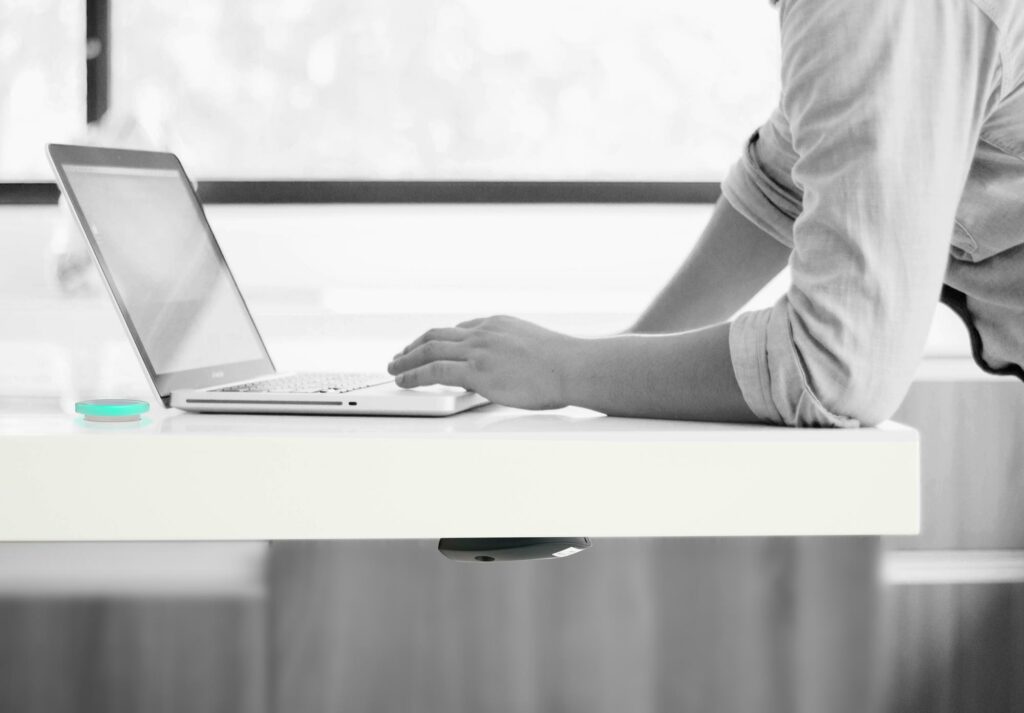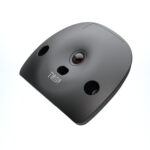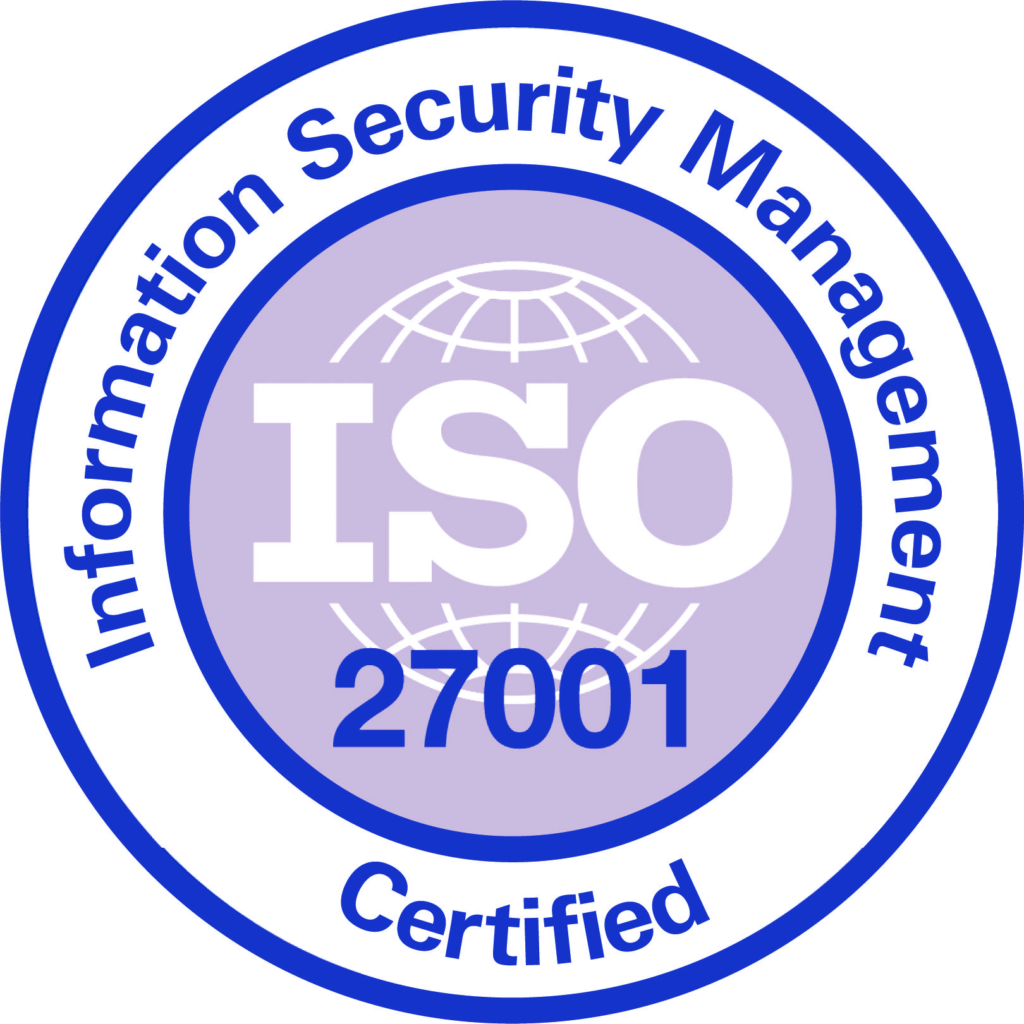
An occupancy sensor is a powerful tool revolutionising how companies manage their work environments, making optimising office space more critical than ever. Whether you’re overseeing a small office or a large corporate campus, understanding and implementing sensors can lead to significant cost savings. They can also help your company to increase efficiency and improve employee satisfaction.
What is an Occupancy Sensor?
An occupancy sensor is a device that detects the presence or absence of people in a specific area. These sensors use various technologies to monitor movement and occupancy in real-time. When integrated with a building or office management system, they provide valuable data. The data can be used to optimise the use of office space, enhance energy efficiency, and improve overall workplace management.
Types of Occupancy Sensors
There are different types of occupancy sensors. Each utilises different technologies to detect presence and movement. The three main types are infrared, ultrasonic, and microwave sensors.
Infrared Sensors:
- Detect body heat.
- Ideal for enclosed spaces like offices and meeting rooms.
- Require direct line-of-sight.
- Commonly used in meeting rooms to detect when a room is occupied.
Ultrasonic Sensors:
- Use sound waves to detect motion.
- Excellent for open areas and spaces with obstacles.
- Can detect movement around corners.
Microwave Sensors:
- Emit microwave signals to detect movement.
- Cover large areas and penetrate non-metallic objects.
- Highly sensitive, even to minor movements.
- Ideal for large open-plan offices or warehouses where wide coverage is needed.
The Benefits for Companies
Cost Savings
Occupancy sensors provide companies with precise data about space utilisation. That allows them to track, identify, and eliminate underutilised areas in the workplace. By detecting frequently vacant spaces, businesses can reduce unnecessary expenses on maintaining and servicing these areas. This data-driven approach can help companies avoid leasing more space than they actually need. And this would help to cut down on real estate costs. Additionally, identifying underutilised areas allows companies to rethink their space allocation strategies. This can lead to the consolidation of office spaces and, consequently, lower utility and operational costs.
Energy Efficiency
Sensors contribute to energy efficiency. They ensure that lights, heating, ventilation, air conditioning (HVAC) systems, and other energy-consuming devices are only activated when spaces are occupied. This ensures that energy is not wasted on powering empty rooms. And that can significantly reduce energy consumption and lower utility bills. The sensors can also be programmed to adjust lighting and climate settings based on occupancy patterns. This is important to ensure that resources are used as efficiently as possible.
Sustainability
Beyond direct cost savings, vacancy sensors play a vital role in supporting a company’s sustainability goals. These sensors help minimise the company’s overall carbon footprint by optimising energy use and reducing waste. Integrating these sensors can be a significant contributor to these efforts for companies striving to achieve sustainability certifications. And companies adhering to environmental, social, and governance standards. Sustainability-driven businesses can benefit from the reduced environmental impact, that comes with lowering energy consumption. They can leverage this for improved brand image and customer trust.
Enhanced Space Utilisation
With these sensors, companies can gain invaluable insights into their office space utilisation metrics. This data allows to optimise the use of physical space by identifying high-traffic areas, underutilised rooms, and the actual demand for different types of spaces, such as meeting rooms, private offices, or collaborative areas. Such insights can inform decisions about reconfiguring the workspace to serve the company’s needs better, enhancing operational efficiency. By reallocating underutilised areas or repurposing them into more functional spaces, companies can reduce the need for additional real estate.
Improved Employee Productivity
An optimised workspace has a direct impact on employee productivity and satisfaction. Sensors can help design spaces that are better aligned with how employees use the office. For example, understanding which areas are most frequented can lead to better layout planning. This would lead to ensuring that collaborative zones, quiet areas, and meeting rooms are appropriately situated to minimise distractions and promote focus. Moreover, ensuring that the workplace environment—whether it’s lighting, temperature, or air quality—adapts to occupancy patterns can create a more comfortable environment for employees.
In hybrid work environments, sensors are vital in bridging the gap between remote and in-office employees. By providing real-time data on desk and room availability, these sensors make it easier to schedule shared spaces efficiently. Employees can plan their in-office days knowing they will have access to the necessary resources. This reduces the frustration of finding space in a busy office. And ensures a more seamless transition between remote and in-office work, ultimately boosting productivity and job satisfaction.
Better Facility Management
Occupancy sensors provide real-time data that can significantly enhance facility management practises. Facility managers can use this data to make informed decisions regarding maintenance schedules, cleaning rotations, and resource allocation. By knowing exactly when and how often spaces are used, managers can schedule maintenance tasks during off-peak times. This would minimise disruptions and ensure that spaces remain functional when needed. Additionally, cleaning crews can be directed more effectively, focusing on high-use areas rather than following static schedules. This level of insight reduces inefficiencies. And helps ensure that resources are used wisely, leading to better-managed facilities that support both operational and financial goals.
Challenges for Companies
Initial Investment Costs
Implementing office sensors across a facility can be a substantial financial commitment. Especially for large offices or organisations with multiple locations. This investment includes not only the sensors’ cost but also the accompanying software and necessary integration into existing building or office systems. This initial outlay may pose a significant challenge for smaller companies with limited budgets. Additionally, the expense of expert installation must be factored in, as structural modifications are often needed to position the sensors throughout the building properly.
Privacy Concerns
One of the main drawbacks of sensors is the potential to infringe on employee privacy. Constant monitoring, even when anonymised data, can create discomfort and unease among staff members. Employees may feel as though their movements are being tracked. And this can lead to a lack of trust and resistance to the technology. Beyond the discomfort, companies must navigate legal considerations surrounding the collection and use of occupancy data. And to ensure compliance with privacy regulations to avoid potential penalties or damage to their reputation.
Potential Technical Failures
Like any technology, office sensors are not immune to technical issues. Sensor malfunctions can occur, leading to inaccurate readings or, in some cases, complete failure to detect the presence of occupants. These glitches may result in wasted energy, such as lights being left on unnecessarily or inefficient space utilisation due to incorrect data. Additionally, if the sensors are integrated into broader building systems like lighting or HVAC controls, any failure could disrupt these systems. And this can cause inconvenience and potentially reduce productivity.
Complex Integragion with Existing Systems
Integrating sensors with an organisation’s existing building or office management systems (BMS) can be complicated. Especially, if the current infrastructure is outdated or incompatible with modern sensor technology. In such cases, companies may face significant expenses when upgrading their systems to facilitate seamless integration. Beyond the technical aspects, office managers and employees must also receive training. They need to learn how to use and interpret the data generated by the sensors, which can be a time-consuming and resource-intensive process.
Resistance to Change
Introducing sensors into a workplace may be met with resistance from employees who see the technology as invasive or unnecessary. This resistance to organisational change can present challenges during the rollout and implementation phases. This can require management to communicate the benefits and address concerns carefully. In organisations with less emphasis on technology or innovation, introducing office sensors may clash with existing workplace culture. Which can lead to friction and slower technology adoption.
What is Office Desk Occupancy Sensor?
Office desk occupancy sensor involves monitoring the usage of individual desks within a workspace. This is particularly useful in hot-desking, hoteling or activity-based working environments where employees do not have assigned seats. In a hybrid work environment, desk sensor monitoring becomes invaluable in managing fluctuating attendance and ensuring fair access to workspace resources.
Benefits of Office Desk Occupancy Sensors
Optimised Desk Allocation
By understanding desk usage patterns, companies can optimise the allocation of desks. And ensure enough workspaces to meet demand without having too many unused desks.
Enhanced Employee Experience
Integrating sensors with desk booking solutions allows employees to quickly find and book available desks. And reduce the time spent searching for a place to work. This is especially beneficial in large offices or campuses.
Cost Savings
Optimising desk usage can reduce the need for additional office space. This can lead to significant cost savings. By analysing occupancy data, companies can downsize their real estate footprint.
What is a Meeting Room Occupancy Monitoring?
Meeting room occupancy tracking involves monitoring the usage of conference rooms and other meeting spaces. This helps understand how these spaces are used and ensure they are available when needed. Additionally, it allows for better planning and resource utilisation, leading to more efficient and productive meetings. Integrating meeting room sensors with booking systems ensures real-time updates. This integration helps employees find available rooms instantly and reduces booking conflicts.

Benefits of Meeting Room Occupancy Sensors
Improved Meeting Room Availability
By analysing data collected by room occupancy sensors, companies can identify patterns of meeting room usage and make necessary adjustments to meeting room booking systems. This ensures that rooms are available when needed. And reduces the frustration of double bookings or unused reserved rooms.
Enhanced Resource Allocation
Understanding how meeting rooms are used can help allocate resources more effectively. For instance, if certain rooms are rarely used, they can be repurposed or redesigned to better serve the company’s needs.
Cost Savings
Just like desk occupancy monitoring, optimising meeting room usage can save significant costs by reducing the need for additional meeting spaces and optimising existing ones..
How to Implement Occupancy Sensors in Your Company?
Step 1: Identify Your Needs
Determine which areas of your workplace would most benefit from office sensors. These could include individual desks, meeting rooms, common areas, and restrooms.
Step 2: Choose the Right Technology
Select the appropriate type of occupancy sensor based on your specific needs. Infrared sensors are good for detecting body heat, ultrasonic sensors can detect motion, and microwave sensors are excellent for covering larger areas.
Step 3: Integrate with Your Building Management System
Ensure your sensors are integrated with your office or building management system for real-time data collection and analysis. This will enable you to make informed decisions based on accurate and up-to-date information.
Step 4: Analyse and Optimise
Regularly review the data collected by your presence sensors and use it to make necessary adjustments to your workspace. This continuous optimisation process will help you maximise the benefits.
Step 5: Train and Communicate
Educate your employees on the benefits and provide training on how the system works. Clear communication can help alleviate privacy concerns and ensure smoother adoption.
Occupancy sensors are a game-changer for modern workspaces. They offer various benefits ranging from cost savings to enhanced productivity. By leveraging the power of office desk and meeting room occupancy monitoring, companies can optimise their space utilisation, improve employee satisfaction, and achieve significant operational efficiencies. Whether you’re a small business or a large corporation, implementing office sensors is a smart investment in the future of your workplace.
For more information about occupancy sensors, click the button below
FAQ
What is an occupancy sensor?
An occupancy sensor is a device that detects if a space is being used. It helps businesses save energy, optimise office space, and improve workplace efficiency.
What is a room occupancy sensor?
A room occupancy sensor is a device that detects if a room is in use. It helps automate lighting, HVAC, and other systems to save energy and optimise space usage.
How do occupancy sensors work?
They use infrared, ultrasonic, or microwave technology to detect movement and presence, automatically adjusting lighting, HVAC, and other systems like booking or cancelling the space.
What are the benefits of occupancy sensors in offices?
They reduce energy costs, improve space management, support sustainability efforts, help automatically book/cancel rooms and enhance employee comfort.
Can occupancy sensors help save money?
Yes, they prevent wasted energy, optimise office layouts, and reduce real estate costs by identifying underutilised spaces.
What types of occupancy sensors are available?
The main types are infrared (detects body heat), ultrasonic (uses sound waves), and microwave (covers large areas).
What is the difference between a PIR and an occupancy sensor?
A PIR (Passive Infrared) sensor detects heat from moving objects, requiring a direct line of sight. An occupancy sensor can use multiple technologies, including PIR, ultrasonic, or microwave, to detect presence more accurately, even without movement.
How do desk occupancy sensors improve hybrid workplaces?
They track desk usage, help employees find available workspaces, and ensure better desk allocation.
Why use meeting room occupancy sensors?
They prevent unused reserved rooms, reduce scheduling conflicts, and improve meeting space availability.
Are occupancy sensors a privacy concern?
Most sensors collect anonymous data and do not record personal information, but companies should ensure compliance with privacy regulations.
How can companies successfully implement occupancy sensors?
Businesses should identify monitoring areas, choose the correct sensor type, integrate with office management systems, analyse usage data, and train employees.


